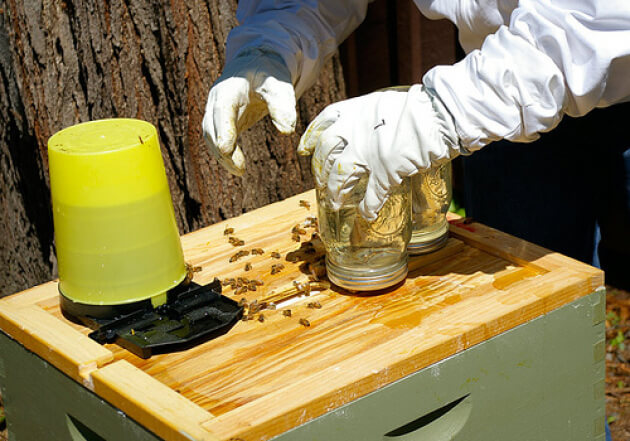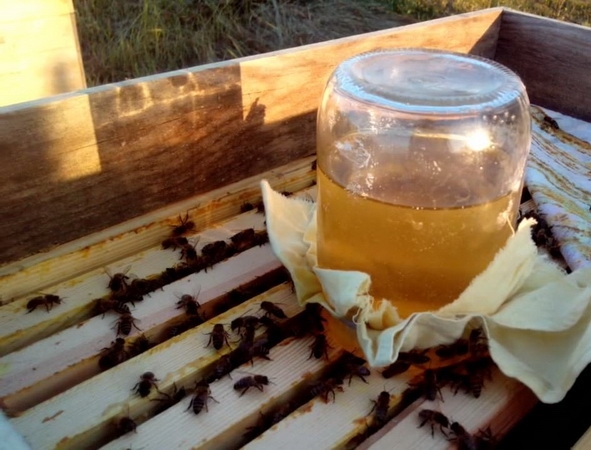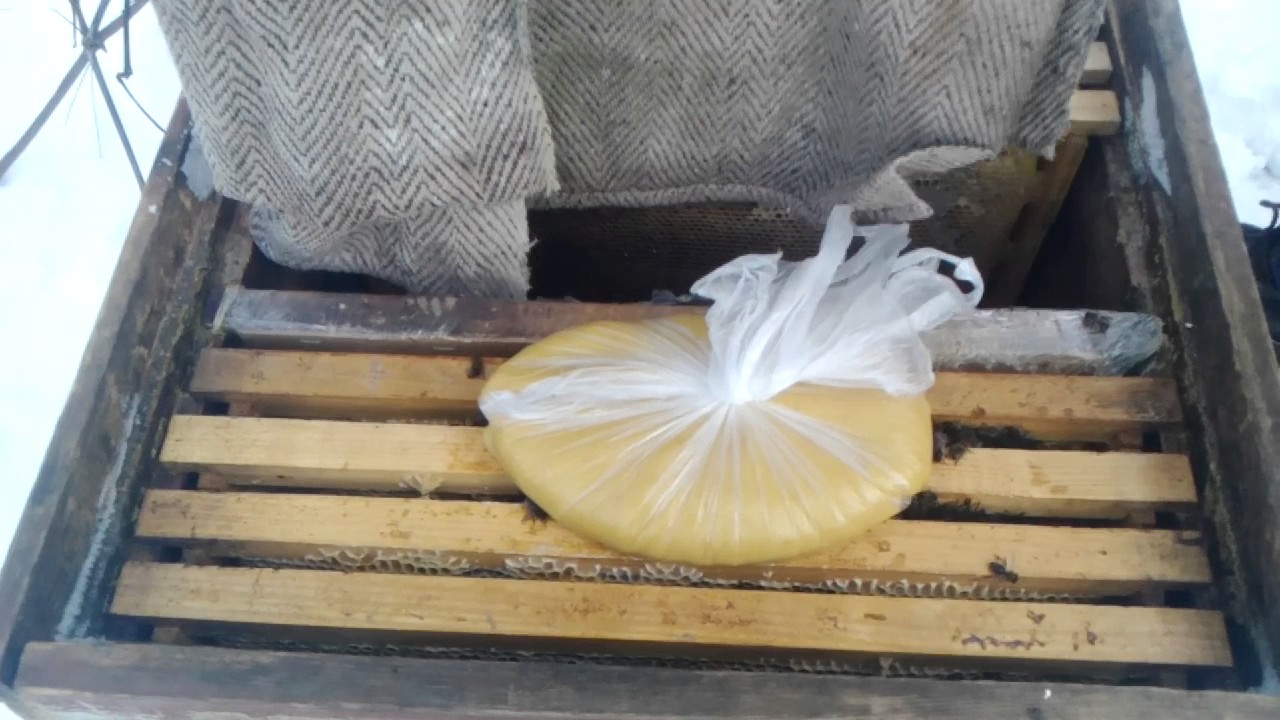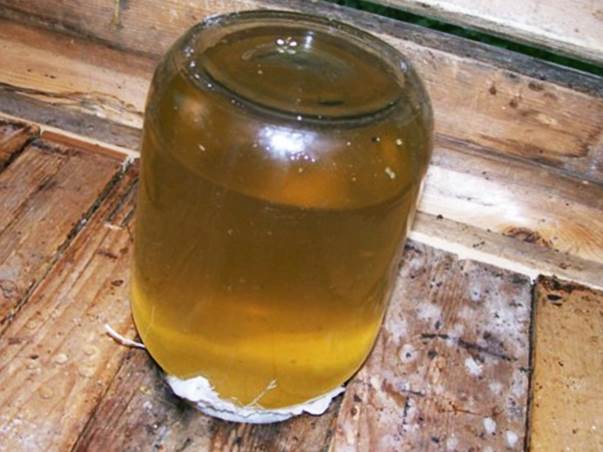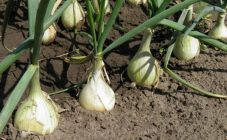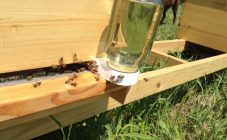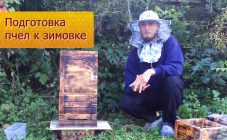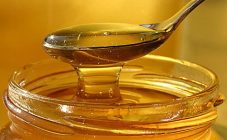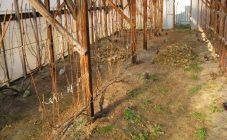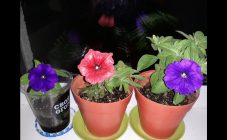Content:
It so happens that bees do not have the required amount of food reserves for winter. To provide them with a well-fed and comfortable wintering, the beekeeper must feed carbohydrate food. One of the best choices is sweet sugar syrup. But in the pre-winter feeding of bees there are some nuances, which are very important to take into account. Only by carefully studying the technology of feeding bees for the winter can you achieve the desired results.
Why feed bees for the winter
Although bees are inactive for some part of the cold season, with the emergence of brood they have their own "worries". The bees feed the young, maintain a certain temperature, spending a fairly large amount of energy, and in order to replenish its reserves, they need to eat well. At this stage, sugar syrup will do its job.
In addition, in the fall, when examining the hives, the beekeeper may notice the spread of any disease in the bees. In such a situation, you need to mix the medicine into the sugar syrup and feed the bees with this mixture.
When to start feeding syrup
When to feed the bees with syrup for the winter and whether it is worth doing it at all, every beekeeping specialist decides for himself.
Despite the fact that many seasoned beekeepers are in favor of spring feeding, most experienced beekeepers still lean towards the autumn distribution of food. Conduct it in accordance with the second half of August to mid-September. Residents of regions with a cold climate are allowed to slightly increase the time, and southerners can safely feed bees until early October, but provided that the air temperature does not drop below 10 ° C.
In the cool season, the flight of bees decreases, the flow period comes to an end. If the feeding procedure is done later, the bees will not have time to process the syrup before the offspring appear. And young animals under no circumstances should take part in the consumption of feeding. "Newborn" bees should accumulate energy for future flights, and not spend them on the transformation of the syrup.
Bees spend about 2 weeks on processing the feeding.
Wintering bees on syrup
Feeding bees for the winter with sugar syrup is suitable mainly for strong bee colonies. It is better for the weak to leave natural honey for nutrition. But even strong families should not spend the winter on one syrup: honey should remain their basis of nutrition, containing substances necessary for normal life.
Before you start feeding the sugar syrup, you need to place a couple of empty frames in the hive. This is where the bees will put the processed syrup. It is known that these highly organized insects consume food, starting with the one located in the middle. Thus, they will first eat the syrup and only then switch to honey.
So that the bees do not give up the treat and take the syrup well, you need to be able not only to cook correctly, but also to correctly distribute it.Some beekeepers give out 2-3 liters to their wards. But a smaller dose of feed is considered more convenient - 1 liter. Bees take it faster, ferment better. If you need to feed a strong colony with a large brood, you can use the first distribution option.
Feeding is carried out mainly from the top feeders. In them, food cools more slowly, and bees like warm syrup and more willingly consume it.
The following devices and containers are used as containers for feeding:
- feeders covered with straw or pieces of wood to prevent bees from getting into the syrup;
- packing bags;
- cans with a capacity of 3 liters.
In farms with a small number of beehives, syrup is packaged in cans. The filled container is covered with gauze in several layers, turned over and placed in the upper section. The bees take feed through the gauze layer.
It is also common to dispense syrup in packaging bags. They are stronger than polyethylene and have micropores through which the smell of food will spread through the hive. In addition, in such bags, the bees make holes on their own, without spending a lot of effort on it.
The bags are filled with warm syrup, tied and neatly placed on frames in the evening. Insulation is placed on top. The bees will eat the syrup in a few days.
Concentration, consistency, dosage
In order for the bees to willingly take the syrup and not spend too much energy on processing it, the production ratio must be observed. For pre-winter feeding, the optimal sugar and water content is 3: 2. The concentration of sugar in the finished product will be 60%.
Composition and proportions of syrup
For 10 liters of syrup you will need:
- 6 kg of sugar;
- 4 liters of water;
- 0.3 ml of acetic acid per 1 kg of sugar to avoid crystallization.
Cane or beet sugar without additives is used. The water for the syrup is boiled and settled for several days, the precipitate formed is removed before use.
Prepare top dressing in an enamel bowl.
The finished syrup must necessarily be thick, since bees spend much more energy on converting liquid feed.
Possible additives
Obviously, the honey obtained from the syrup will be deprived of useful substances that play an important role in maintaining the working capacity and survival of bees. Therefore, it is allowed to add certain components to the winter feeding for bees, when necessary.
What to add:
- Cobalt has a positive effect on young animals, enhances the immunity of bees. For 2 liters of syrup, 2 tablets of cobalt chloride are enough, which can be found at the pharmacy.
- Baking yeast will help the bees gain strength before spring. For 10 liters of syrup, 250 g of compressed yeast is taken. In this case, the syrup is prepared with a 1: 1 ratio. Dry yeast is pre-soaked.
- Cow's milk is a feed component rich in useful microelements. For syrup with its use, take 20% less liquid. Add milk when the finished syrup cools down to 40 ° C. 10 liters of product will need 3.2 liters of water and 0.8 liters of milk.
- A chicken egg will fill the lack of proteins in the bee's diet. Beat a fresh egg with a whisk and filter through cheesecloth. Add to the prepared syrup at the rate of 1 egg per 1 bee family.
- The needles will help protect the hives from mites. Add a small amount to the finished syrup.
Cooking technology
The settled water is poured into an enamel container, brought to a boil and removed from heat, sugar is added, mixed well. Then everything is left to cool down to 40-45 ° C. Then add additional components, mix thoroughly again. Give the syrup warm. It can be warmed up a little, but in no case should it boil.
Bees don't take syrup: reasons
Sometimes bees, who have worked productively for summer honey plants, refuse the treat in the form of syrup. Sometimes this happens in weak bee colonies, which completely switch to heating the brood and do not have time to consume the treat. Do not distribute food, especially artificial food, in large quantities. If a honeycomb has opened in the combs (possibly honeydew, which is dangerous), the bees will ignore the syrup, switching to natural food. Honeydew honey will need to be removed, forcing the bees to switch to fresh and safe food prepared by the beekeeper.
It happens that the syrup is stale, and the bees just did not like it. It is not recommended to store the finished product for a long time, it is wiser to cook a new one in small portions.
At too low temperatures, the bee may also refuse the treat. It is worth paying close attention to the timing of feeding the bees with sugar syrup for the winter and be sure to follow them.
Bees provide a person with valuable and useful products, but in return they require careful attention to themselves. Observing all the norms and proportions when feeding, you can get strong insects, ready for spring flight and an active season of honey collection. But you should not be too zealous, as overfeeding the bees can lead to their death. In beekeeping, as in any other occupation, the golden rule is important: everything should be in moderation.
